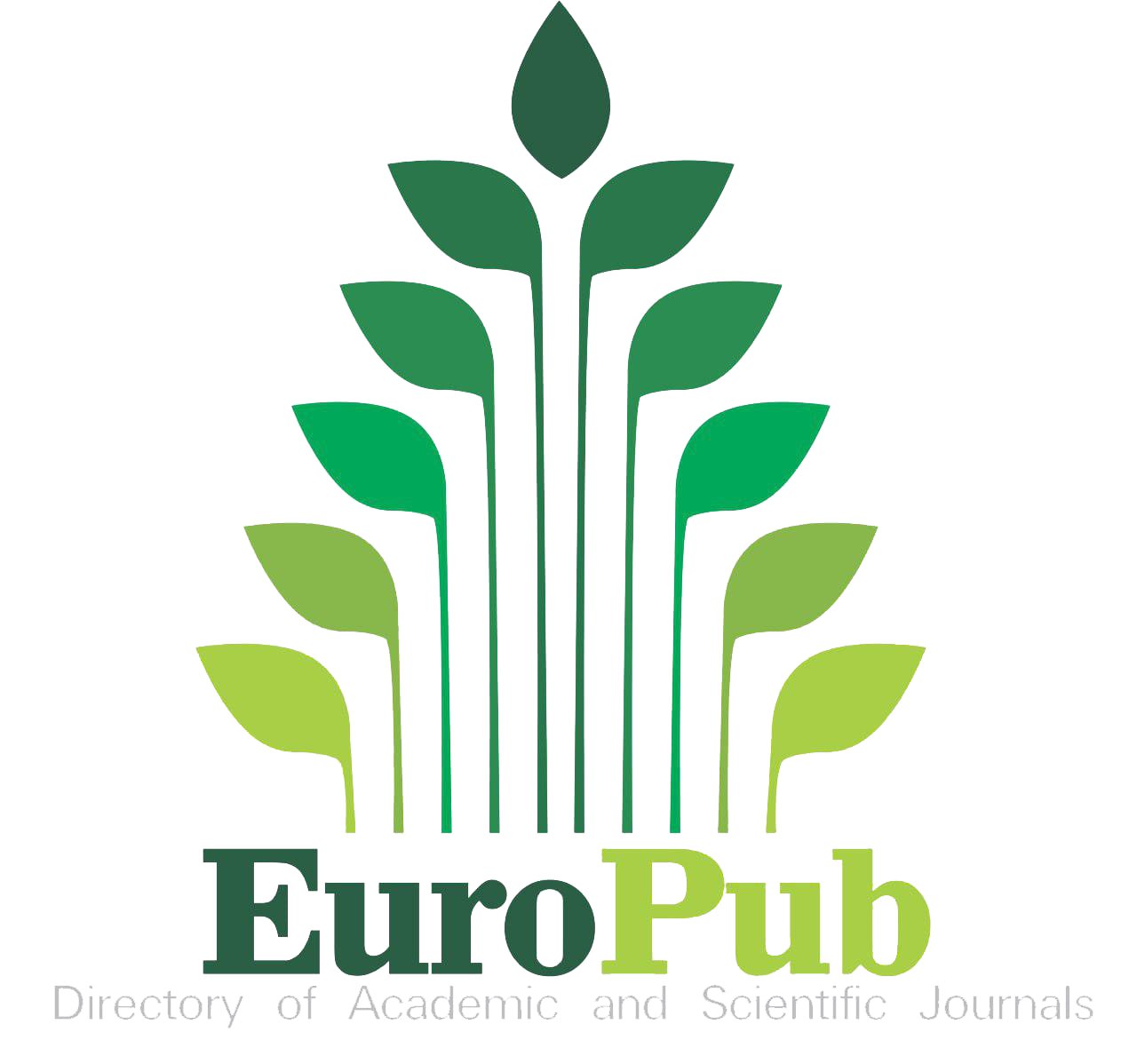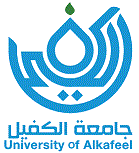Al-Bahir Journal for Engineering and Pure Sciences
Abstract
Background and Objectives: Malaria, a parasitic protozoan disease caused primarily by Plasmodium falciparum, has killed millions of people in Africa, particularly those with meager or no access to orthodox medical facilities and therapies. Extracts from the Azadirachta indica (neem) plant is believed to possess antimalaria properties among the locals that rely on herbs. Numerous in - vivo studies have suggested the antimalarial properties of neem extract and phytochemicals. This study employs an in - silico method through molecular docking techniques to provide insight while adding credence to the antimalarial potential of phytochemicals of neem plants as claimed in folkloric medicine.
Methods: – The crystal structure of Plasmodium falciparum a causative parasite of malaria was retrieved from the Protein Data Bank, and Azadirachta indica phytochemicals were obtained from the PubChem database. Molecular docking through virtual screening was carried out on the characterized phytochemicals. The bioactive compounds from the Azadirachta indica plant were investigated by docking with the crystal structure of Plasmodium falciparum receptor and compared with standard antimalarial drugs (lumenfrantrine and artemisinin).
Results: - Three Azadirachta indica phytochemicals (gedunnin, nimbinene and salanin) shows a competing binding energy and affinity when compared to the approved antimalarial drugs (lumefrantrine and artemisinin). while the binding energies for azadirachtin, nimbandiol and quercetin is lower than the value obtained in artemisinin but comparable with lumefrantrine.
Conclusion: This virtual screening verified and identified a potential phytochemical component of antimalarial properties against a protein target: 1m7o, Plasmodium falciparum triosephosphate isomerase (PfTIM)
Recommended Citation
E.T., Areh; O., Atolani; and L, Kambizi
(2022)
"In silico Evaluation of the Antimalarial Potential of the Phytoconstituents of the Azadirachta indica Plant,"
Al-Bahir Journal for Engineering and Pure Sciences: Vol. 1:
Iss.
1, Article 3.
Available at: https://doi.org/10.55810/2313-0083.1004
References
- Arévalo-Herrera M, Lopez-Perez M, Medina L, Moreno A, Gutierrez JB, Herrera S. Clinical profile of Plasmodium falciparum and Plasmodium vivax infections in low and unstable malaria transmission settings of Colombia. Malar J 2015;14(154):1e11. https://doi.org/10.1186/s12936-015-0663-8
- Joste V, Maurice L, Bertin GI, Aubouy A, Boumédiène F, Houzé S, et al.. Identification of Plasmodium falciparum and host factors associated with cerebral malaria: description of the protocol for a prospective, case-control study in Benin (NeuroCM). BMJ Open 2019;9(5):1e9. https://doi.org/10.1136/bmjopen-2018-027433
- Ravindra G, Balaram P. Plasmodium falciparum triosephosphate isomerase : new insights into an old enzyme*. Pure Appl Chem 2005;77(1):281e9.
- Perkins DJ, Were T, Davenport GC, Kempaiah P, Hittner JB, Michael J. Severe malarial anemia: innate immunity and pathogenesis. Int J Biol Sci 2011;7(9):1427e42. https://doi.org/10.7150/ijbs.7.1427
- Neves BJ, Braga RC, Melo-Filho CC, Moreira-Filho JT, Muratov EN, Andrade CH. QSAR-based virtual screening: advances and applications in drug discovery. Front Pharmacol 2018;9(1275):1e7. https://doi.org/10.3389/fphar.2018.01275
- Phillips MA, Burrows JN, Manyando C, Huijsduijnen RH Van, Voorhis WC Van, Wells TNC. Malaria. Primer 2017;3(17050):1e24.
- Parthasarathy S, Ravindra G, Balaram H, Balaram P, Murthy MRN. Structure of the Plasmodium falciparum triosephosphate isomerase - phosphoglycolate complex in two crystal forms: characterization of catalytic loop open and closed conformations in the ligand-bound state. Biochemistry 2002;41(44):13178e88.
- Mawson AR. The pathogenesis of malaria: a new perspective. Pathog Glob Health 2013;107(3):122e9.
- Miller LH, Ackerman HC, Su X, Wellems TE. Malaria biology and disease pathogenesis: insights for new treatments. Nat Med 2013;19(2):156e67.
- White NJ, Pukrittayakamee S, Hien TT, Faiz MA, Mokuolu OA, Dondorp A. Malaria. Lancet 2014;383:723e35.
- Cowman AF, Healer J, Marapana D, Marsh K. Malaria: biology and disease [Internet] Cell 2016;167(3):610e24. Available from: https://doi.org/10.1016/j.cell.2016.07.055.
- Haldar K, Murphy SC, Milner DA, Taylor TE. Malaria: mechanisms of erythrocytic infection and pathological correlates of severe disease. Annu Rev Pathol Mech 2007;2:217e49.
- Schofield BL, Hackett F. Signal transduction in host cells by a glycosylphosphatidyllnositol toxin of malaria parasites by louis schofield and fiona hackett. Natl Institure Med Res 1993;177:145e58.
- Warren GL, Andrews CW, Capelli AM, Clarke B, LaLonde J, Lambert MH, et al.. A critical assessment of docking programs and scoring functions. J Med Chem 2006;49(20):5912e31.
- Wassmer S, Grau G. Severe malaria: what's new on the pathogenesis front? Int J Parasitol 2016;47:1e8.
- Wassmer SC, Taylor TE, Rathod PK, Mishra SK, Mohanty S, Arevalo-herrera M, et al.. Investigating the pathogenesis of severe malaria: a multidisciplinary and cross-geographical approach. Am J Trop Med Hyg 2015;93(Suppl 3):42e56.
- White NJ. Determinants of relapse periodicity in Plasmodium vivax malaria. Malar J 2011;10(297):1e35.
- Simpson J, Aarons L, Collins W, Jeffery G, White N. Population dynamics of untreated Plasmodium falciparum malaria within the adult human host during the expansion phase of the infection. Parasitology 2002;124:247e63.
- Newman DJ, Cragg GM. Natural products as sources of new drugs over the nearly four decades from 01/1981 to 09/2019. J Nat Prod 2019 [A-AH].
- Thomford NE, Senthebane DA, Rowe A, Munro D, Seele P, Id AM, et al.. Natural products for drug discovery in the 21st century: innovations for novel drug discovery. Int J Mol Sci 2018;19(1578):1e29.
- Abdel-razek AS, El-naggar ME, Allam A, Morsy OM,Othman SI.Microbial natural products in drug discovery.Processes 2020;8(470):1e19.
- Khalid SA,Duddeck H,Gonzalez-Sierra M.Isolation and characterization of an antimalarial agent of the neem tree Azadirachta Indica.J Nat Prod 1989;52(5):922e7.
- Ujah II, Nsude CA, Ani ON, Alozieuwa UB, Okpako IO, Okwor AE. Phytochemicals of neem plant (Azadirachta indica) explains its use in traditional medicine and pest control. GSC Biol Pharm Sci 2021;14(2):165e71.
- Alzohairy MA. Therapeutics role of azadirachta indica (Neem) and their active constituents in diseases prevention and treatment. Evid base Compl Alternative Med 2016;2016(7382506):1e11.
- Ukaoma A, Nwachukwu MO, Ukaoma VO, Adjeroh LO, Urenus I. Phytochemical and antimicrobial activity of neem seed oil (azadirachta indica) on bacteria isolates. J Chem Inf Model 2019;7(2):1e19.
- Ogbuewu IP, Odoemenam VU, Obikaonu HO, Opara MN, Emenalom OO, Uchegbu MC, et al.. The growing importance of neem (Azadirachta indica A. Juss) in agricultrue, industry, medicine and environment: a review. Res J Med Plant 2011;5:230e45.
- Sarah R, Tabassum B, Idrees N, Hussain MK. Bioactive compounds isolated from neem tree and their application (April 2020). Springer; 2019. p. 1e27.
- Srivastava SK, Agrawal B, Kumar A, Pandey A. Phytochemicals of AzadirachtaIndica source of active medicinal constituent used for cure of various diseases: a review. J Sci Res 2020;64(1):385e90.
- Bhowmik D, Yadav J, Tripathi KK, Kumar KPS, Pradesh U. Herbal remedies of Azadirachta indica and its medicinal application. J Chem Pharmaceut Res 2010;2(1):62e72.
- Achi NK, Onyeabo C, Nnate DA, Ekeleme-Egedigwe CA, Kalu IK, Chibundu IC, et al.. Therapeutic effects of Azadirachta indica A.Juss. leaves in malaria-induced male Wistar rats. J Pharm Pharmacogn Res 2018;6(3):191e204.
- Braga TM, Rocha L, Chung TY, Oliveira RF, Oliveira AI, Morgado J, et al.. Biological activities of geduninda limonoid from the Meliaceae family. Molecules 2020;25(493):1e24.
- Subramani R, Gonzalez E, Arumugam A, Ortega A, Bonkoungou S, Narayan M, et al.. Nimbolide inhibits pancreatic cancer growth and metastasis through ROSmediated apoptosis and inhibition of epithelial-to- mesenchymal transition. Sci Rep 2016;6(19819):1e12.
- Biswas K, Chattopadhyay I, Banerjee RK. Biological activities and medicinal properties of neem (Azadirachta indica). Curr Sci 2002;82(11):1336e45.
- Boyle NMO, Banck M, James CA, Morley C, Vandermeersch T, Hutchison GR. Open Babel : an open chemical toolbox. J Chem Inf Model 2011;3(33):1e14.
- Dallakyan S, Olson AJ. Small-molecule library screening by docking with PyRx. Methods Mol Biol 2015;1263:243e50.
- Velanker SS, Ray SS, Gokhale RS, Suma S, Balaram H,Balaram P, et al.. Triosephosphate isomerase from Plasmodium falciparum : the crystal structure provides insights into antimalarial drug design. Structure 1997;5(6):751e61.
- Ravi L, Krishnan K. A handbook on protein-ligand docking tool: autodock4. Innovare J Med Sci 2016;4(3):1e6.
- Trott O, Olson AJ. Software news and update AutoDock vina: improving the speed and accuracy of docking with a new scoring function, efficient optimization, and multithreading. J Comput Chem 2009;31(2):455e61.
- Patil R, Das S, Stanley A, Yadav L, Sudhakar A. Optimized hydrophobic interactions and hydrogen bonding at the target-ligand interface leads the pathways of drug-designing. PLoS One 2010;5(8):1e10.
- Salentin S, Schreiber S, Haupt VJ, Adasme MF,Schroeder M. PLIP: fully automated protein e ligand interaction profiler. Nucleic Acids Res 2015;43(April:443e7.
- Stojanovi S, Zari SD. Hydrogen bonds and hydrophobic interactions of porphyrins in porphyrin-containing proteins. Open Struct Biol J 2009;3:34e41.
- Parthasarathy S, Balaram H, Balaram P, Murthy MRN. Structures of Plasmodium falciparum triosephosphate isomerase complexed to substrate analogues: observation of the catalytic loop in the open conformation in the ligand-bound state. Acta Crystallogr 2002;58(12):1992e2000.
- Laman M, Benjamin JM, Moore BR, Salib M, Tawat S, Davis WA, et al.. Artemether-lumefantrine versus artemisinin-naphthoquine in Papua New Guinean children with uncomplicated malaria: a six months post-treatment follow-up study. Malar J 2015;14(121):1e7.

















Indexed in: